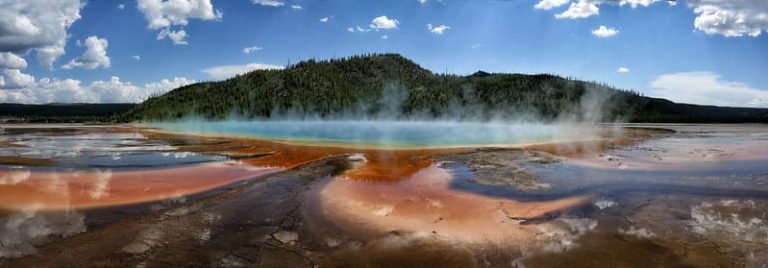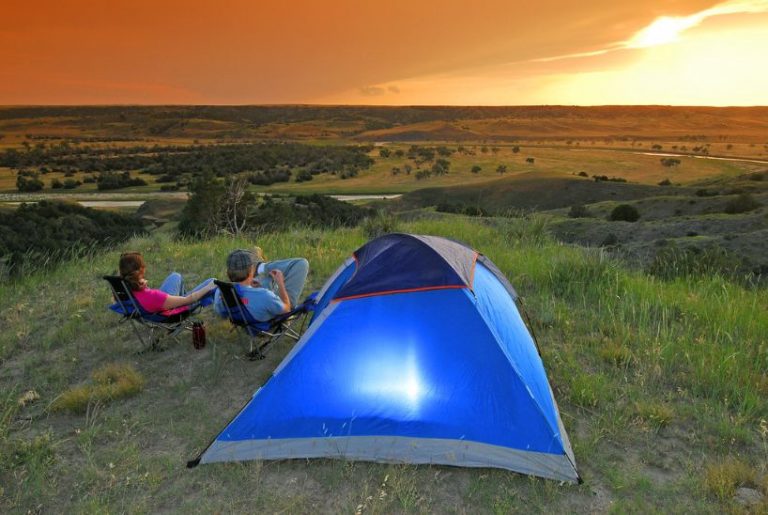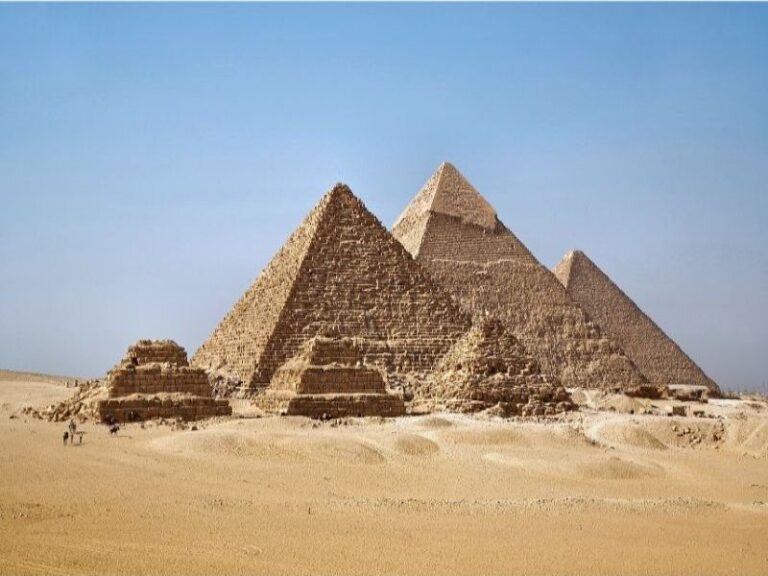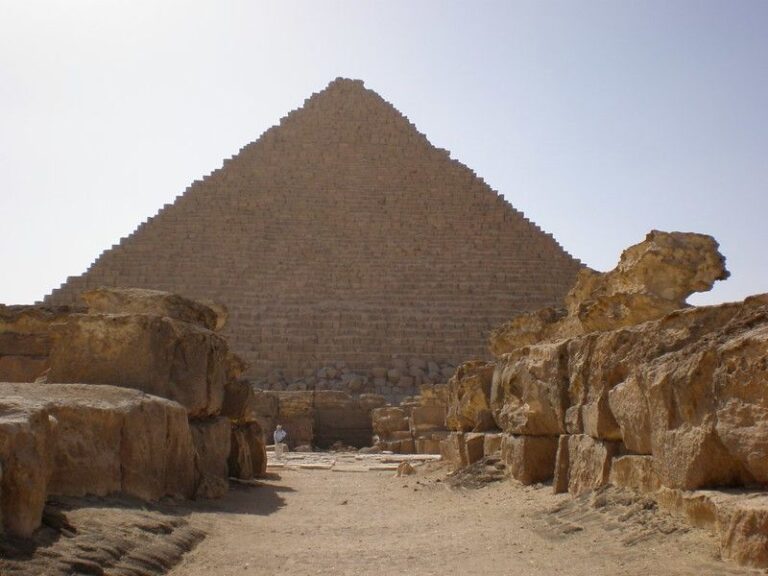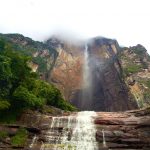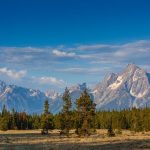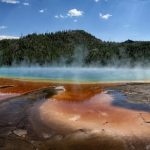Tour To Yellowstone National Park | 17 reasons to visit Yellowstone National Park
Tour To Yellowstone National Park
Yellowstone hosts an abundance of historical sites, stunning landscapes, and great activities! There are so many different things to do that it can be hard to choose what you want to enjoy. However, the natural beauty of the park is more than enough reason for anyone who loves adventure and outdoor getaways.
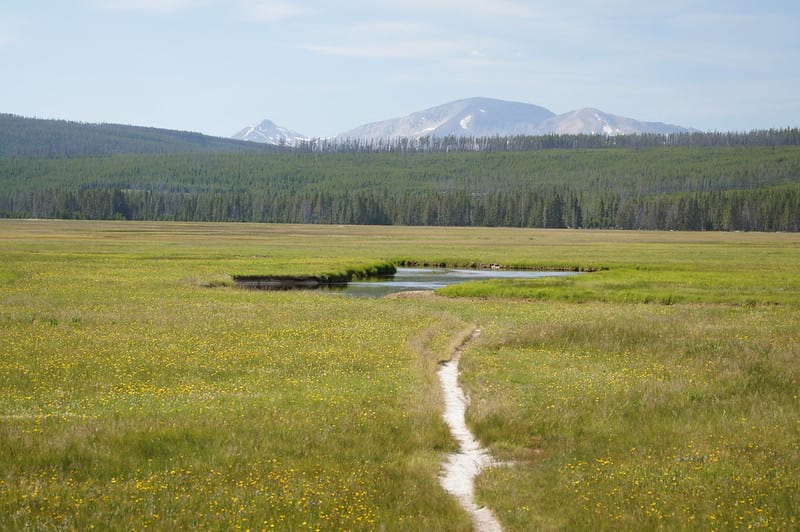

“Yellowstone National Park” by Tjflex2 is licensed under
There is 17 reason to visit Yellowstone National Park. You’ll find plenty of ways to enjoy and explore the spectacular wonders for yourself, including day hikes, scenic drives, and camping tours.
Yellowstone National Park is a great place to visit. You’ll find tips on how much time to spend, where to stay, the best time to visit, and more! So how do you prioritize your time?
Best Time Visit Yellowstone National Park


“Absaroka Motel Views” by krossbow is licensed under CC BY-NC-ND 2.0
While there is no bad time to visit Yellowstone, the best time to go depends on what you’re looking for. Here’s a breakdown of what you can expect during each season:
Spring:
Yellowstone National Park is a beautiful place, but it can be difficult to visit in the spring because the roads and trails are muddy and covered in snow. Many of the park’s hotels, restaurants, and visitor centers are also closed during this time. However, there are still some upsides to visiting Yellowstone in the spring. You may see baby animals, and there are fewer people visiting the park.
Summer:
The best time to visit Yellowstone National Park is in the summer months, between Memorial Day and Labor Day weekend. This is when the weather is the most pleasant and the days are the longest. However, summer is also the busiest time of year at the park, so you may want to visit early in June or September to avoid the crowds. September is a particularly good time to visit, as the kids are back in school and the mosquitoes are gone.
Fall:
Fewer tourists visit Yellowstone National Park in the fall, making it a great time to enjoy the lovely colors of the changing leaves and cooler temperatures. Be sure to check for road closures before you go and pack for inclement weather, as closures and storms can happen in early November. You’ll need to make reservations well in advance, as fall is becoming a more popular travel season.
Winter:
Yellowstone’s winters are a truly magical time. The steam from the thermal vents and springs turns to frost on the nearby trees, and elk make postholes in the deep snow. Boiling water from the geysers bursts into droplets that freeze in the air, creating a truly unique and otherworldly landscape. The season starts in late December and occasionally lasts through March. In snowy basins like Black Sand, you can go skiing, ice-climbing, cross-country snowshoeing, snowmobiling, and exploring the ski and snow vehicle trails. The frozen waterfalls, which sparkle like frosted chandeliers, are also a sight to behold.
There Are Five Entrances To Yellowstone National Park
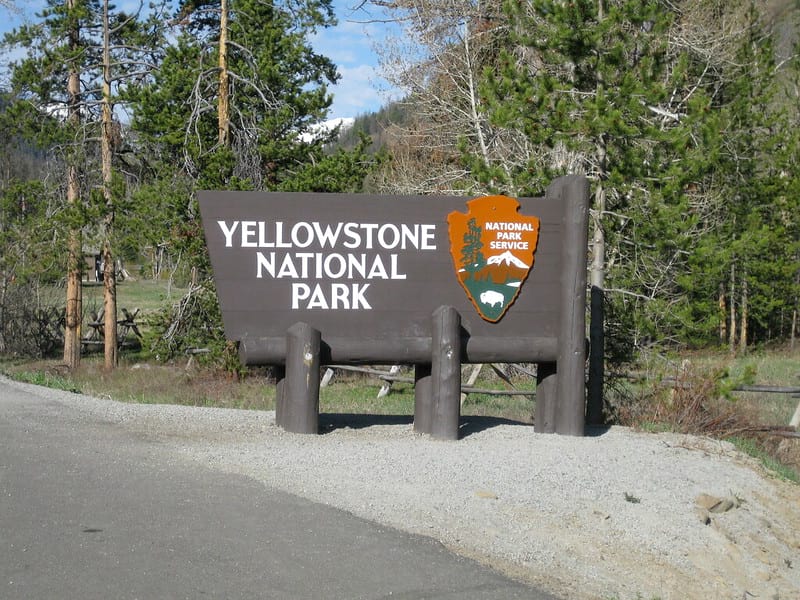

“Yellowstone National Park East Entrance Sign” by puroticorico is licensed under CC BY-NC-SA 2.0
There are five entrances to Yellowstone National Park and they all have different points of access. You may want to visit each one or use this guide as a reference when planning your trip.
- The North Entrance to Yellowstone National Park is open year-round and is the closest entrance to the town of Gardiner, Montana. From the North Entrance, it is a short drive to Mammoth Hot Springs, one of the most popular attractions in the park.
- The Northeast Entrance is the closest entrance to the town of Cooke City, Montana. This entrance is popular with wildlife watchers, as it puts you at the doorstep of some of the best wildlife viewing in the park.
- The East Entrance to Yellowstone is the closest entrance to the town of West Yellowstone, Montana. From the East Entrance, it is a short drive to Yellowstone Lake, the largest lake in the park.
- The South Entrance to Yellowstone is the closest entrance to the town of Jackson, Wyoming. This entrance is popular with visitors who want to tackle two national parks in one day, as it is also the entrance to Grand Teton National Park.
- The West Entrance to Yellowstone is the closest entrance to the town of West Thumb, Wyoming. From the West Entrance, it is a short drive to geyser paradise, where you can see some of the park’s most famous geysers, including Old Faithful.
Yellowstone National Park Lodges
Yellowstone National Park Lodges offer a range of accommodations for visitors to choose from, with options available for all seasons. There are nine lodges within the park, each with its own unique style and atmosphere. Whether you prefer a traditional hotel or a cozy cabin, Yellowstone Lodges has something for everyone. Located in various parts of the park, these lodges provide a convenient and comfortable base for exploring all that Yellowstone has to offer.
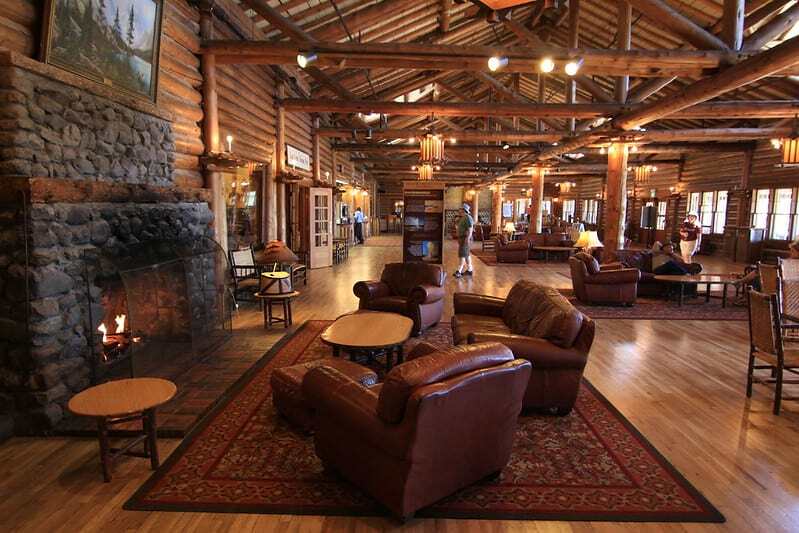

“Lake Lodge, lobby” by YellowstoneNPS is licensed under CC BY 2.0
Old Faithful Inn
- 2.5 miles from Kepler Cascades
- 2.4 miles from Morning Glory Pool
Canyon Lodge and Cabins
- 2 miles from the Grand Canyon
- 12.1 miles from the Norris Geyser Basin Museum
- 16.2 miles from the Fishing Bridge Visitor Center
Grant Village Lodge
3 miles from the West Thumb Geyser Basin
Lake Hotel and Cabins
- 3 miles from West Thumb Geyser Basin
- 21.4 miles from Old Faithful
- 27.3 miles from Grand Teton Park
Mammoth Hot Springs Hotel and Cabins
- 10-minute walk to Mammoth Hot Springs
- 2.3 miles to Boiling River
- 4 miles to Undine Falls
Old Faithful Lodge
Old Faithful Snow Lodge
- 10 minutes from Old Faithful geyser
- 3 miles from Mystic Falls
Roosevelt Lodge
- 1.3 miles from Calcite Springs
- 2.3 miles from Tower Fall
- 20.2 miles from the Upper Falls
There are 12 campgrounds at Yellowstone National Park
Yellowstone National Park has 12 campgrounds within the park, and the elevations of these campgrounds range from 6,200 feet (Mammoth Campground) to 7,900 feet (Canyon Campground). The elevation of a campground can affect the temperature and weather conditions at the campground, with higher elevations generally experiencing cooler temperatures and a higher chance of precipitation. It’s a good idea to check the forecast for the specific campground you plan to stay at, and to come prepared with the appropriate gear. In addition to the elevation, it’s also important to consider the facilities and amenities offered at each campground, as well as the distance to the park’s attractions when choosing which campground to stay at.
17 Best Things To See And Do When Visiting Yellowstone National Park
Yellowstone is a popular destination and offers visitors the chance to experience natural wonders firsthand. The variety of attractions on offer means there’s something for everyone, whether they’re interested in getting close up with the geysers or taking hikes among the stunning scenery. We all know that Yellowstone is an amazing place! This section will highlight the 17 best things to do there.
1. Old Faithful Geyser
Old Faithful is the most active geyser in any national park. It is not as large or as regular as other geysers, but it erupts more frequently than any other.
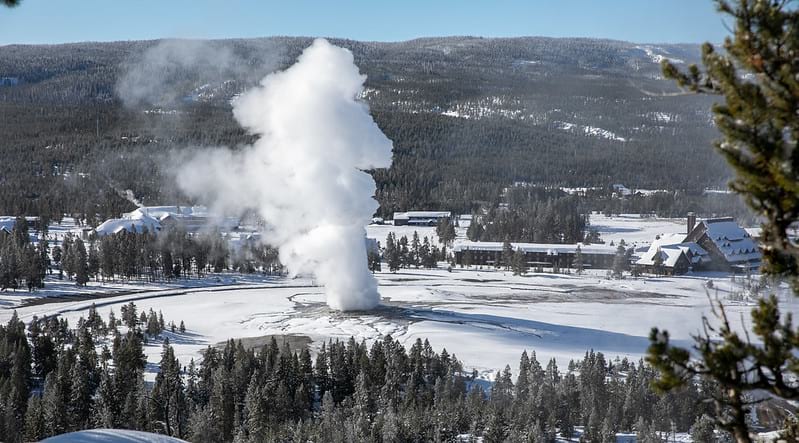

“Old Faithful Geyser from Observation Point” by YellowstoneNPS is licensed under CC PDM 1.0
It’s the centerpiece of the Old Faithful Historic District. There is an average temperature of 169.7°F (76.5°C). Eruptions can last 1-5 minutes and produce between 3,700-8,400 gallons of boiling water.
Geysers have constrictions in their systems that prevent water from freely flowing to the surface where it would escape. A lot of geysers can be found in the Upper Geyser Basin including Old Faithful. The boiling water that drives them all comes from Yellowstone’s volcano. When there is too much pressure, the steam escapes—a sign that an eruption will happen soon.
The Old Faithful is one of the most famous geysers and surely a treat for visitors who stop by to soak up its grandeur!
You’ll also have a great view of Old Faithful and the beautiful Deck of the Old Faithful Inn. If you’ve seen it in person before, you’ll probably want to watch it again from the front deck! The deck is the perfect spot for a relaxing lunch with a view and dinner. You can grab food to go while watching some nearby wildlife!
2. Upper Geyser Basin
Old Faithful Geyser is the most famous geyser in Yellowstone, and it can be found in the Upper Geyser Basin which has a concentration of geothermal features. This remote location offers up a variety of spectacular scenes for visitors,
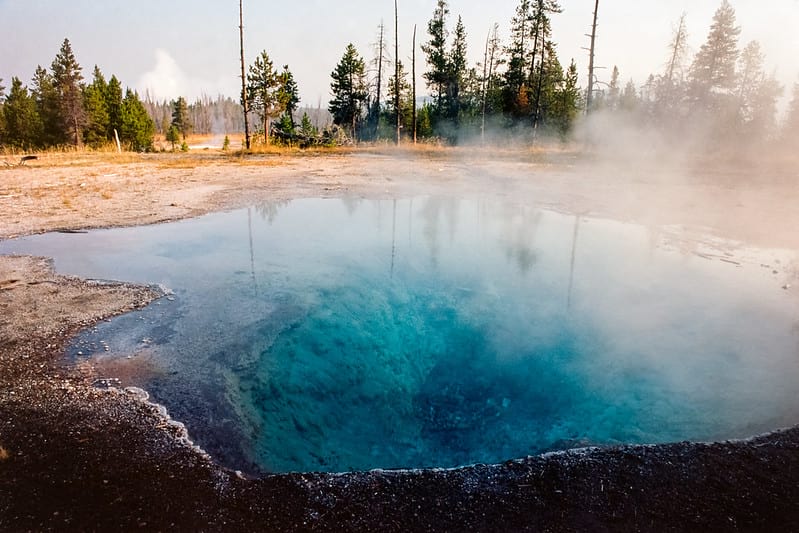

“Lemon Spring 1” by chrislon28 is licensed under CC BY-ND 2.0
60% of the world’s geysers are in Yellowstone National Park. The Upper Geyser Basin is widely recognized for its geysers in Yellowstone. It also includes pools, springs, and other features like this awesome scale structure. Within one square mile, you can expect to find more than 150 hydrothermal wonders. Of that huge number, only five major geysers are regularly predicted by the naturalist staff.
The geysers here are called Old Faithful, Daisy, Grand, Riverside, and Castle, There are also numerous smaller geysers and hot springs in the basin and a mudpot that was recently produced by an eruption.
3. Grand Prismatic Spring
The Grand Prismatic Spring, Yellowstone’s largest natural hot spring, is approximately 370 feet in diameter and over 160 feet deep. Parking for this protected landmark is limited during peak hours from 10 am to 6 pm. The geyser basin spring resides in Midway Geyser Basin.
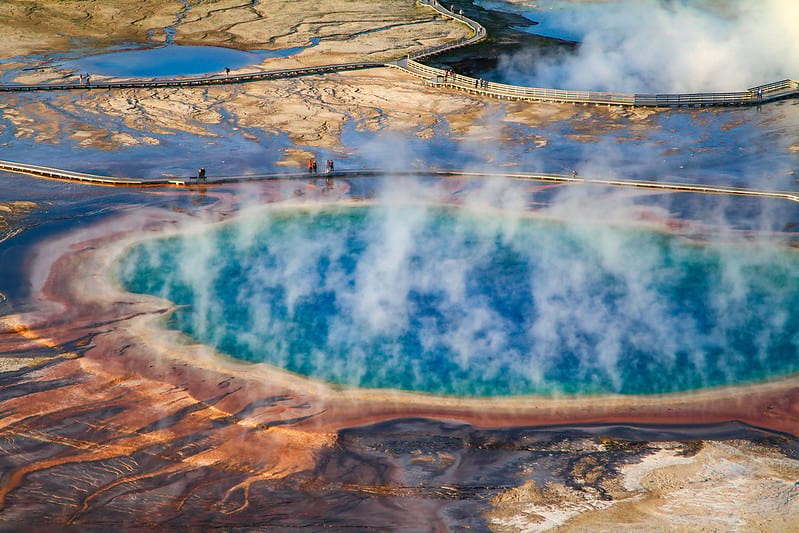

“Grand Prismatic Spring” by naturenps is licensed under CC BY 2.0
Yellowstone’s Grand Prismatic Spring is Yellowstone’s largest natural hot spring. The geyser basin spring resides in Midway Geyser Basin. Parking is limited during peak hours from 10 am to 6 pm, and there are limited parking spaces.
Spring colors change depending on the season. The center of the pool is sterile because of extreme heat and the effect is strongest at the deepest and cleanest. The Midway Geyser Basin features several boardwalks that lead you straight to the Grand Prismatic spring. In summer you’ll usually see colors such as orange, and red whereas in winter things are more likely to be dark green.
You’ll get a grand view of the Grand Prismatic Spring in Yellowstone National Park from Fairy Falls. You’ll also get an incredible view of Midway Geyser Basin and all its colorful natural beauty along the way. This paradise in the middle of a national park is full of natural wonders that you’ll even feel as if you’re on another planet.
4. Grand Canyon of the Yellowstone
In the Grand Canyon of Yellowstone National Park, you’ll experience truly breathtaking views. The canyon is 20 miles long, reaches up to 4,000ft wide in places, and goes deep in other areas. Take a scenic drive of the North Rim and South Rim, hike the short trails and see the colorful canyon walls.
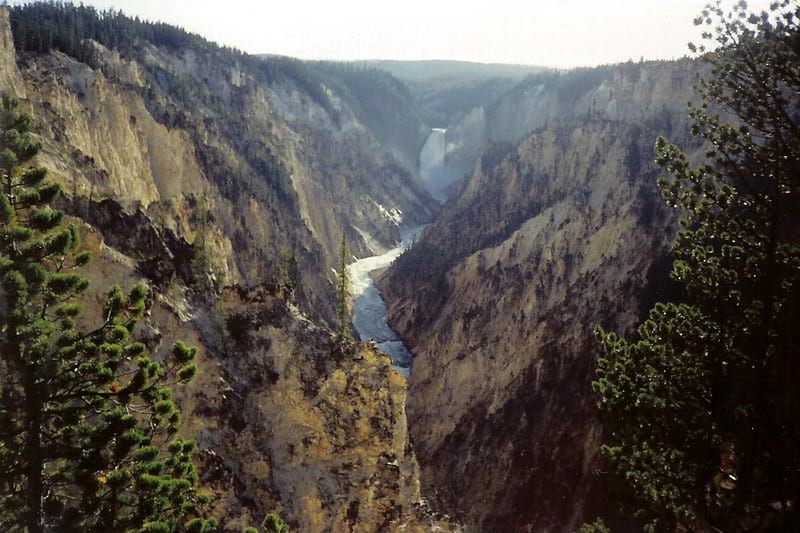

“Artist Point, Yellowstone National Park” by Ken Lund is licensed under CC PDM 1.0
The Grand Canyon of Yellowstone has three main sections, including the Brink of the Upper Falls, the North Rim, and the South Rim. One of the tallest waterfalls in the park, the Lower Falls is about twice as tall as Niagara Falls. Its stately 300-foot waterfall gives you a fine overlook of its natural beauty, giving you some great photo opportunities at Artist Point on both the North and South Rim.
Specifications: The Grand Canyon of the Yellowstone should be explored
- Depth: more than 1,000 feet (305 m)
- Length: 20 miles (32 km)
- Height of Lower Falls: 308 feet (93 m)
- Height of Upper Falls: 109 feet (33 m)
- Width: 1,500–4,000 feet (450–1,200 m)
- Time of Canyon lava flow: 484,000 years ago
- Primary rock type: rhyolite/ altered rhyolite/tuff
5. Biscuit Basin
Biscuit Basin gets its name from all the biscuit-shaped mineral formations found there. The pools during your visit will be quite calm, though many of them are also steaming and bubbling with colorful microbial life covering them in hues of vibrant orange.
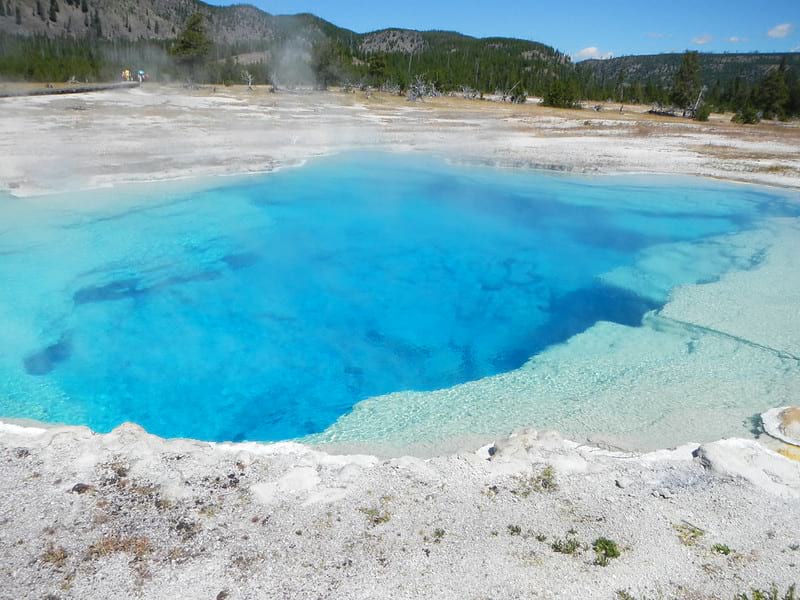

“DSCN2791” by Curtis Abert is licensed under CC BY-ND 2.0
Biscuit Basin is an easy trail to explore with many fascinating features. The trail also includes, among others, Avoca Spring, Sapphire Pool, and Jewel Geyser. One of the most beautiful pools in the park is Sapphire which is considered one of the hottest pools. It provides a contrast to Mustard Spring, which has a bright color, and Jewel Geyser erupts every 7-10 minutes. It’s well worth a stop to see this lovely sight!
In the 1959 Hebgen Lake Earthquake, it erupted and ripped away from around the pool all its deposits of round, spotted stones which gave Biscuit Basin its name in the first place. The Old Faithful area is around one hour on foot.
6. Mammoth Hot Springs
Yellowstone National Park is full of a variety of great vacation hotspots depending on your preferences. Mammoth Hot Springs is a popular complex in Park. It was created thousands of years ago when warm water cooled and deposited calcium carbonate. Despite being situated outside the caldera border, these geothermal features are related to the same magmatic system that powers other Yellowstone volcanic areas. Mammoth Hot Springs is scenic and great for families.
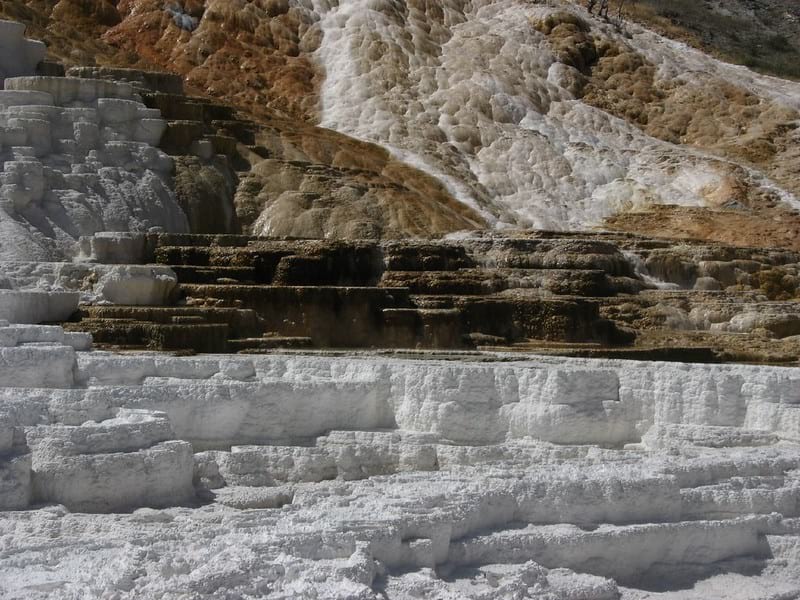

“Lower Terrace, Mammoth Hot Springs, Yellowstone National Park, Wyoming” by Ken Lund is licensed under CC BY 2.0
There are vibrant colors of water in Hot Springs from Mammoth to Grand Prismatic. The different waterfalls creating cascading hot springs make this place truly unique. If you want to see the main attraction of Mammoth Hot Springs, then walk down through the Upper and Lower Terraces. It’s a short trek, but the views are well worth it.
Some thermoclines create the colors that you commonly see in hot springs, and were created by microbes called thermophiles. From Mammoth to Prismatic, your hot spring journey will leave you in awe. And to top it off, waterfalls provide a calming soundscape for your journey!. Here, these microorganisms can be seen across terraces as orange, brown, purple, and yellow if you’re paying attention to the natural details. Waterfalls on the other hand make this place more unique and gorgeous with water cascading down its walls.
7. Hayden Valley
The Hayden Valley is a 50-square-mile area located at the center of Yellowstone National Park. It runs for a total of 7 miles from north to south and from east to west. Hayden Valley is located on the west side of the Yellowstone River and stretches from Canyon to Yellowstone Lake. The Grand Loop Road that follows this section is near the east side of the valley where it meets with the river.
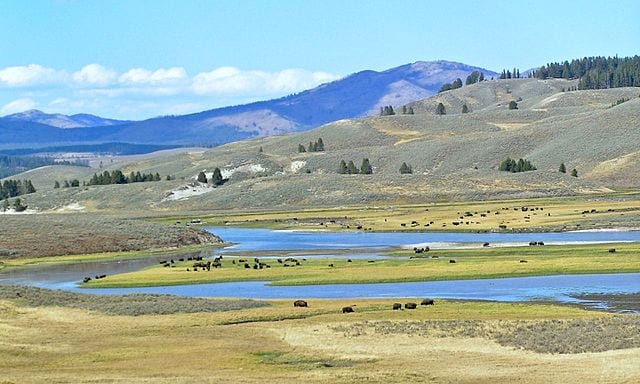

Bison in Yellowstone National Park (herd) by Mammals of Hayden Valley is licensed under CC BY-SA 4.0
As you explore the breathtaking scenic area, you can see all the different wildlife that calls Yellowstone home. The Yellowstone River feeds the park’s largest lake, and along its course, people have the chance to see lots of wildlife. It’s best to go during the off-season when crowds are low, but if you check it out during peak season chances are you will still find a lot of animals.
Wildlife loves the area for its meandering river that provides a variety of habitats. The Yellowstone valley is amazing because of this and its diverse wildlife. Whether you are looking for big animals like bison, elk, moose, and bears or smaller creatures such as rabbits, beavers, and red foxes, Yellowstone should be high on your list of tourist destinations.
It’s best to find a spot with good visibility where you can pull over and watch for a while. Sometimes you won’t see the animals right away, so it’s worthwhile to stake out somewhere with good visibility.
8. Lamar River
The Lamar River is one of several tributaries to the Yellowstone River. It spans 40 miles in Wyoming and flows entirely through Yellowstone National Park. The shoreline features beautiful landscapes and numerous opportunities for fishing, hiking, and picnicking in a natural environment.
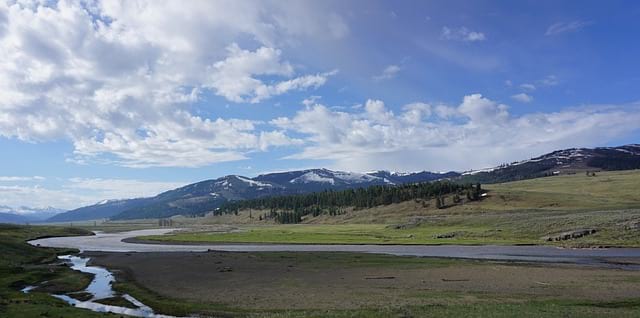

Image by Jim Drinkwine from Pixabay
The Carrington and Lamar River valleys in YNP are excellent places to explore and enjoy wildlife. There are three locations in the valley where, in 1995, the reintroduction of wolves was performed: Soda Butte, Crystal Creek, and Rose Creek. The Lamar River area is often referenced as America’s Serengeti while this re-introduction was being carried out.
The Lamar River Trail is a seven-mile round-trip hike with two campsites near Cache Creek. It’s great for wildlife viewing and has water crossings that connect you to Cache Creek.
9. Mount Washburn
The Dunraven Pass Trail offers amazing views at both ends of the trail. The trail is one of the most popular in this national park. The winding hills and scenic trees make it an ideal place for people who want to walk and clear their minds.
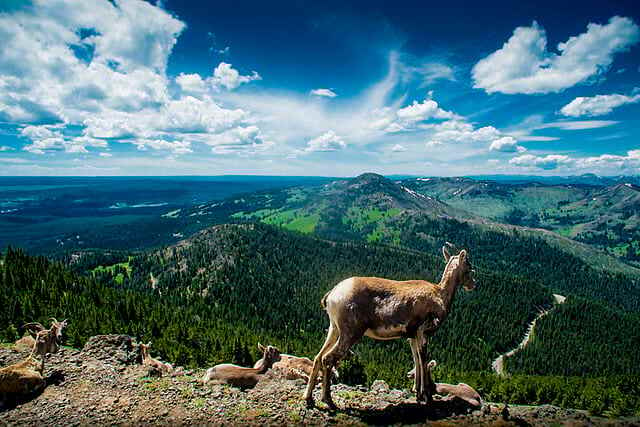

“File: YELLOWSTONE-2014 98.jpg” by Partytimeusa is licensed under CC BY-ND 2.0
There are two ways to reach the summit of Mount Washburn: Both trails offer great scenery – views of bighorn sheep, mountain goats, wildflowers, and a spectacular lookout.
Dunraven Pass to Mount Washburn – 6.8 miles, 1394 feet in elevation, 6.8 miles.
Chittenden Road to Mount Washburn – 1482 feet in elevation, 5.6 miles.
10. Norris Geyser Basin
One of the most spectacular hikes in the park is offered by Norris Geyser Basin. The geothermal waters are hot and acidic like no other, making for some truly otherworldly landscapes. This is the tallest active geyser in the world, where you may also find rare acidic geysers and colorful thermophile-filled pools. Geyser basin Norris is home to many interesting geysers and pools, including Steamboat Geyser.
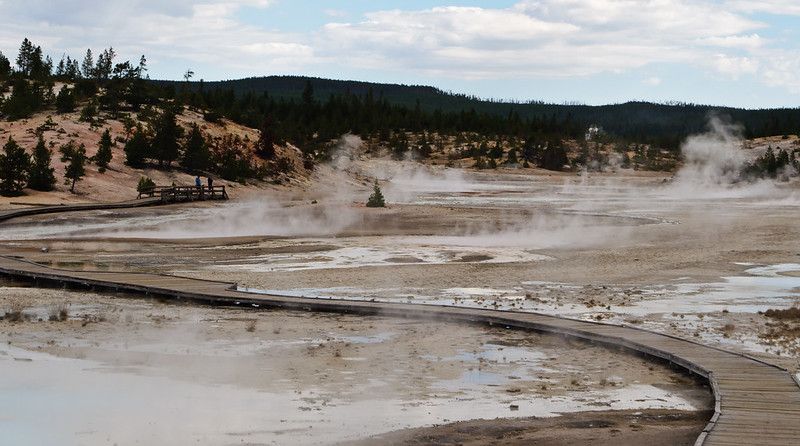

“Norris Geyser Basin, Yellowstone National Park” by InSapphoWeTrust is licensed under CC BY 3.0
Norris Geyser Basin is the most popular location in Yellowstone National Park for visitors. Back Basin is a 1.7-mile loop that you can complete from the Museum of Natural History. Porcelain Basin is a 0.8-mile loop and Back Basin is a 1.7-mile loop that you can complete from the Museum.
11. West Thumb Geyser Basin
West Thumb geyser basins in Yellowstone provide both incredible views and unique geothermal activity. The best part of this trail is the Abyss Pool in the southwest corner that is deep enough to dive into. I highly recommend checking out this trail, especially if you’re heading south to Teton.
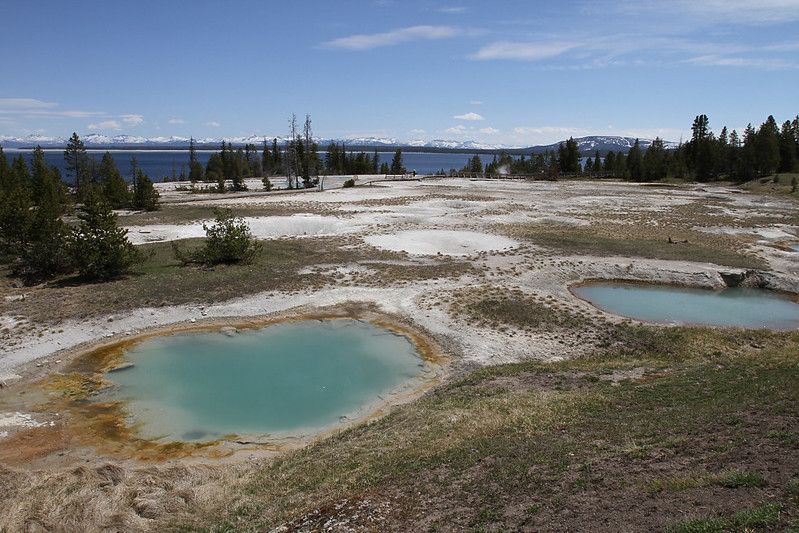

“West Thumb Geyser Basin” by YellowstoneNPS is licensed under CC BY-NC-SA 2.0
Big Cone, Beach Go, Lakeshore Geyser, Fishing Cone, Abyss Pool, King Geyser, and Occasional Geyser are some of the most popular thermal pools in West Thumb of Yellowstone Lake. Big Cone Abyss pool is about half a mile long.
12. Yellowstone Lake
The largest freshwater lake in North America is found in Yellowstone National Park. Yellowstone Lake is above 7,000 feet and is the biggest among North American lakes. It freezes over every year in the winter and spends half the summer melting before thawing in May or early June.
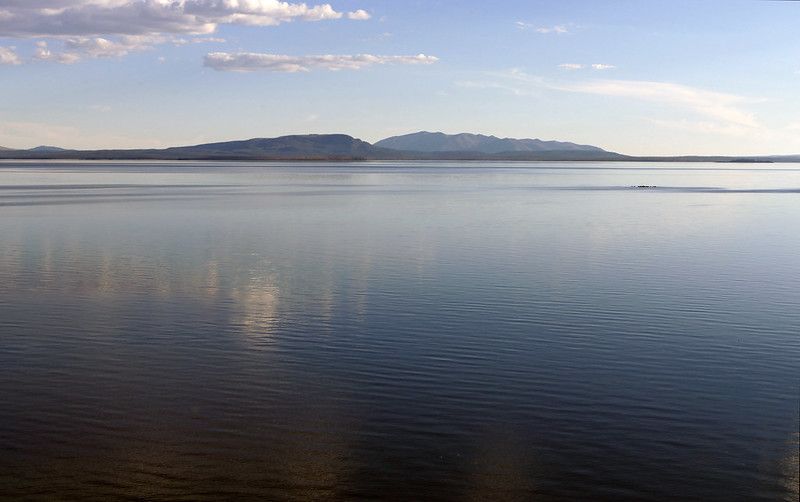

“Yellowstone Lake” by YellowstoneNPS is licensed under CC PDM 1.0
Yellowstone Caldera holds more than 10,000 hydrothermal features. Among them are Geysers, Hot Springs, MudPots, and Fumaroles. The geysers in Yellowstone are more popular than others because there are over 500 active ones. If you’re into natural landmarks then it’s worth going to Yellowstone for sure. With such a large number, this makes the park a must-see.
13. Old Faithful Inn
Old Faithful Inn is well known for its atmosphere. With its proximity to the Old Faithful geyser, the hotel offers a breathtaking view from the second floor.
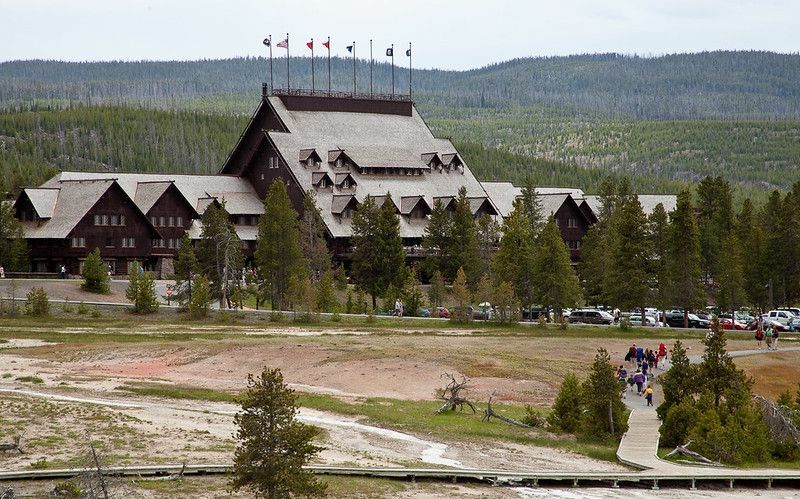

“Old Faithful Inn” by alh1 is licensed under CC PDM 1.0
Old Faithful Inn is one of the most popular places to stay when visiting Yellowstone National Park. It might look like a log cabin from afar, but in reality, it’s the world’s largest log cabin structure. Its towering lobby has a massive stone fireplace, a hand-crafted clock, and lots of other interesting things to look at.
14. Fairy Falls
Fairy Falls, at 200 feet tall, is among Yellowstone’s spectacular waterfalls. The excursion can be extended by another 0.6 miles to the Spray and Imperial geysers, bringing the total distance to 1.2 miles.
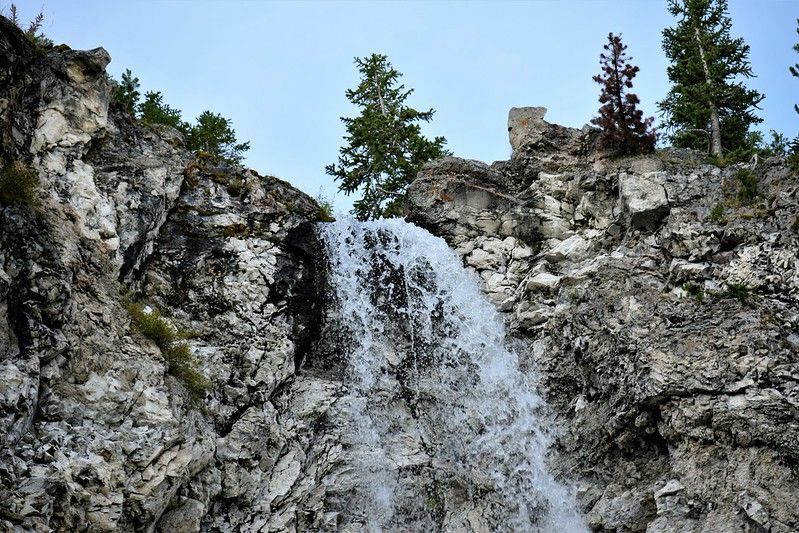

“Fairy Falls, Yellowstone National Park” by Direwolf73 is licensed under CC PDM 1.0
Fairy Falls is one of Yellowstone’s most spectacular falls and can be reached after a 1.6-mile hike through a young lodgepole pine forest where you may also see elk and deer. To continue the trail you would need to walk for 1 mile and including it will lead to seeing other waterfalls and geysers.
15. Yellowstone River
The Yellowstone River, which flows 671 miles from its source in southeastern Wyoming to the Gulf of Mexico, is one of the last major undammed rivers in the lower 48 states.
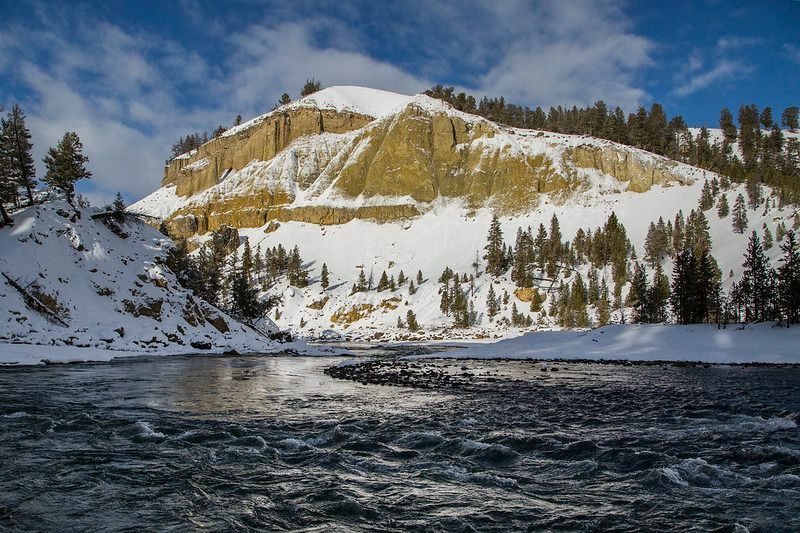

“Yellowstone River” by YellowstoneNPS is licensed under CC BY-ND 2.0
The last major river in the lower 48 that has not been dammed is the Yellowstone River. It starts at Yount Peak in the Absaroka Mountain Range and to Yellowstone Lake. The trail starts at Fishing Bridge and runs North, through LeHardys Rapids and Hayden Valley.
16. Tower Fall
Headwaters of the Yellowstone River are at elevations of 1850 feet in North Dakota and 12,800 ft in the mountain peaks. Hiking to the bottom of the waterfall has become unsafe due to trail erosion. Tower Fall feeds into the Missouri River which stretches from the Rocky Mountains near Yellowstone National Park to Montana.
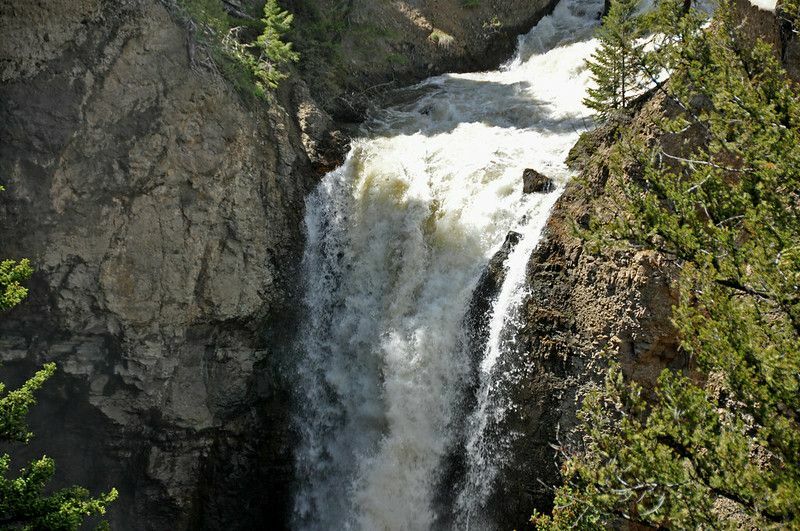

“Tower Falls (Yellowstone National Park, northwestern Wyoming, USA)” by James St. John is licensed under CC BY-SA 2.0
The Fountain Group has the largest mudpots in Yellowstone. White Dome Geyser is not flashy, but it can provide gorgeous displays of pink and white. The overlook is just a short walk from the Tower Fall parking area, making it an easy-to-reach viewpoint off of the Grand Loop Road.
17. Lower Geyser Basin
In the Lower Geyser Basin, there are a wide variety of thermal features. This includes geysers, pools, and springs. The Great Fountain Geyser is one of the many spectacular geysers in the Lower Geyser Basin.
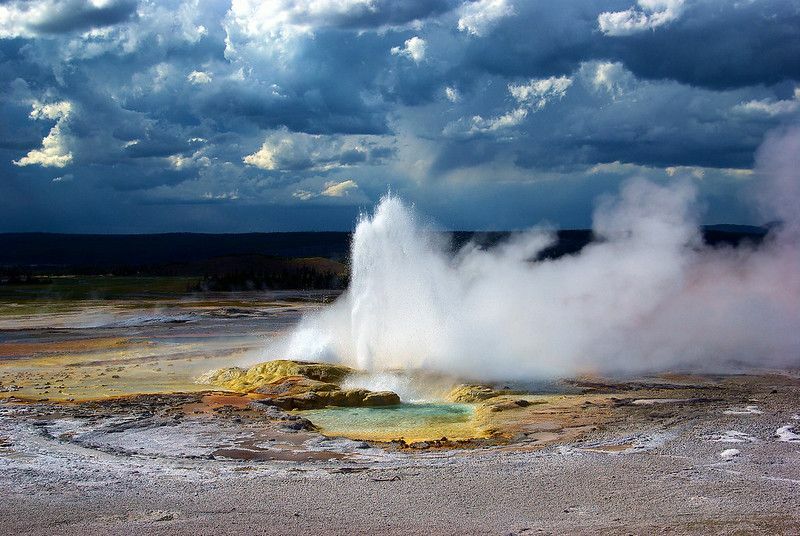

“Clepsydra Geyser, Lower Geyser Basin, Yellowstone National Park (a UNESCO World Heritage Site), Wyoming, August 8, 2010” by exit78 is licensed under CC BY 2.0
The Fountain Group has the largest mud pots in Yellowstone. White Dome Geyser is not flashy, but it can provide gorgeous displays of pink and white. The overlook is just a short walk from the Tower Fall parking area, making it an easy-to-reach viewpoint off of the Grand Loop Road.
When You Visit Yellowstone National Park: entrance fees and passes cost
Yellowstone National Park passes can be found online or at any entrance station. For more info
More articles about Yellowstone Facts, History, and Location

